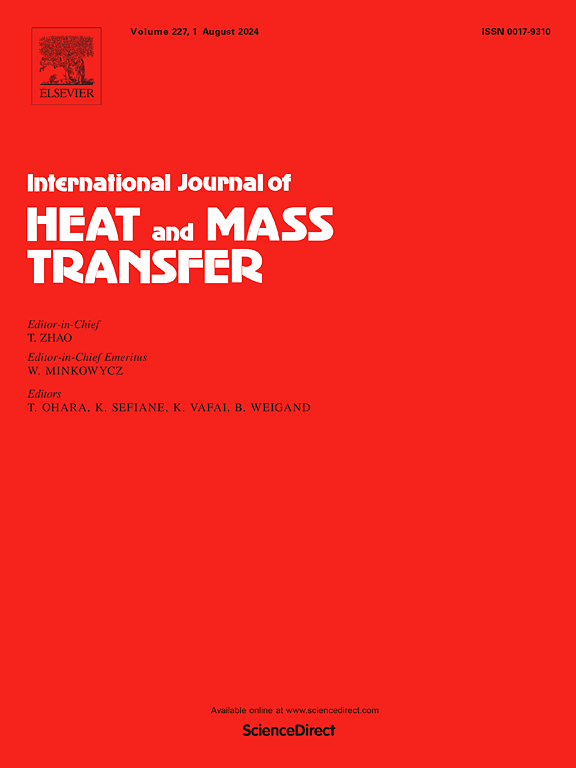Local heat transfer coefficients for cryogenic hydrogen flow in circular tubes with constant wall temperature
IF 5
2区 工程技术
Q1 ENGINEERING, MECHANICAL
International Journal of Heat and Mass Transfer
Pub Date : 2025-07-11
DOI:10.1016/j.ijheatmasstransfer.2025.127454
引用次数: 0
Abstract
Cryogenic storage technologies as liquid hydrogen (LH2) or as cryo-compressed hydrogen (CcH2) are developed to store large amounts of hydrogen onboard heavy-duty vehicles. In both applications, the cryogenic hydrogen needs to be heated to ambient temperatures before being converted in the fuel cell. The available heat source onboard heavy-duty vehicles is the coolant of the fuel cell or hydrogen combustion engine with temperatures up to 350 K. For CcH2 tanks, the hydrogen can enter the heat exchanger with temperatures around 40 K. Thus, the maximum occurring temperature difference inside the heat exchanger can exceed 300 K. Without thorough knowledge of the local heat transfer inside the heat exchanger, freezing can block the heat exchanger and, thus, cause a shutdown of the hydrogen supply of the fuel cell. In the field of rocket engines, several correlations are proposed for heat transfer to hydrogen with high wall-to-bulk temperature ratios .
CFD simulations are used to thoroughly investigate the local heat transfer for a wide range of operating conditions as they occur in CcH2 storage applications. The hydrogen pressure is considered in the range from 15 bar to 400 bar and the temperature in a range of 40 K to 150 K. The existing correlations are compared to the CFD simulation data and an improved correlation is proposed which correlates the CFD data with a maximum deviation of 25%.
恒壁温圆管内低温氢流动的局部换热系数
液态氢(LH2)或低温压缩氢(CcH2)等低温储存技术的发展是为了在重型车辆上储存大量的氢。在这两种应用中,低温氢在转化为燃料电池之前都需要被加热到环境温度。重型车辆上可用的热源是燃料电池或氢燃烧发动机的冷却剂,温度最高可达350 K。对于CcH2储罐,氢气可以在40 K左右的温度下进入热交换器。因此,热交换器内部发生的最大温差可以超过300k。如果不彻底了解换热器内部的局部传热,冻结可能会阻塞换热器,从而导致燃料电池的氢供应停止。在火箭发动机领域,提出了几种高壁体温度比Tw/Tb的氢传热关系式。CFD模拟用于深入研究CcH2存储应用中各种操作条件下的局部传热。氢气的压力在15bar到400bar之间,温度在40k到150k之间。将现有的关联关系与CFD模拟数据进行了比较,提出了一种改进的关联关系,使CFD数据的最大偏差为25%。
本文章由计算机程序翻译,如有差异,请以英文原文为准。
求助全文
约1分钟内获得全文
求助全文
来源期刊
CiteScore
10.30
自引率
13.50%
发文量
1319
审稿时长
41 days
期刊介绍:
International Journal of Heat and Mass Transfer is the vehicle for the exchange of basic ideas in heat and mass transfer between research workers and engineers throughout the world. It focuses on both analytical and experimental research, with an emphasis on contributions which increase the basic understanding of transfer processes and their application to engineering problems.
Topics include:
-New methods of measuring and/or correlating transport-property data
-Energy engineering
-Environmental applications of heat and/or mass transfer

 求助内容:
求助内容: 应助结果提醒方式:
应助结果提醒方式:


